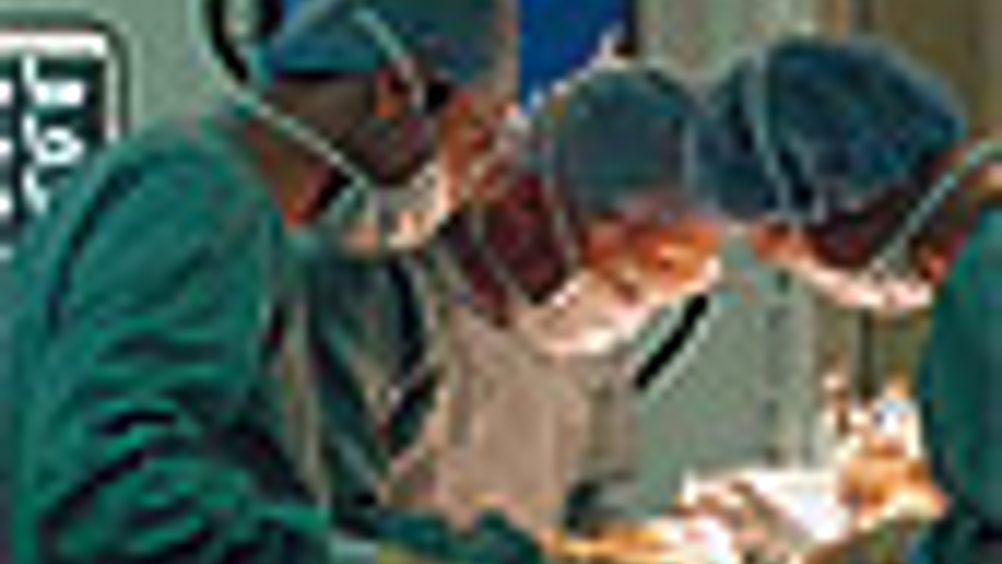Steady progress

Surgeons may be able to perform keyhole surgery with greater ease thanks to a hands-free camera holder that can zoom and search inside a patient's abdomen.
The FreeHand robotic device, from Prosurgics, was developed with the help of Cambridge-based product development company Sagentia.
Currently, keyhole surgery is performed using a fibreoptic laparoscope, a device consisting of a flexible tube, that a theatre nurse or junior doctor controls for the surgeon.
But the FreeHand camera unit (which can be clamped to the side of any operating table) removes this third party requirement.
It moves by receiving information from a hands-free controller worn on a headband or attached to a surgeon's cap, and an activation pedal. The surgeon selects the direction of the laparoscope using head movements.
The hands-free controller contains accelerometers to detect the head motion of the surgeon and relays the direction to the camera via an infrared signal.
'It's not dissimilar to a home remote control,' said Ian Anderson, Sagentia's head of product development. 'However, it has encoded data so you can't get one device talking to another. It's quite secure.'
A simple LED indicator unit located next to the camera module lights up to show the axis of laparoscope movement — up, down, left or right.
The camera only moves when the surgeon steps on the activation pedal. As soon as the foot is removed from the pedal the movement stops. The laparoscope remains stationary until the pedal is pressed again — so that the image is completely steady.
The scope can tilt from 70 to -20º relative to the horizontal. Surgeons can quickly zoom into an area of a patient by swiftly tapping on the pedal and tilting the head down. Zooming out is performed by lifting the head, and a short tap on the pedal returns the indicator to tilt-and-pan mode.
According to Anderson the device has a great level of flexibility. 'Surgeons kind of get to the point where they forget there is a robot there and they become at one with the operation,' he said.
The FreeHand unit is designed so a surgical team can attain images from the inside of a patient completely hands free, but the scope can be manually overridden at any time.
The technology follows on from a previous robotic camera device from Prosurgics called EndoAssist. The difference, said Anderson, is that the new device is smaller, easier to use and more affordable.
'FreeHand is about half the size of a house brick,' he said. 'EndoAssist was the size of a post box, actually sitting behind the surgeon and coming over his head.'
Sagentia was able to help reduce the amount of components in the FreeHand device from several hundred to 50. The way they did that, said Anderson, was to re-think the way to drive the mechanism.
'The laparoscope is driven into the body and moved around using three motors and three different drive axes all in the space of something the size of your heart,' he said.
All of this, said Anderson, allowed the cost of the device to be cut from several hundred thousand pounds to the £10,000 to £20,000 range. He added that the need for such a device is definitely there.
Anderson explained that when surgeons perform keyhole surgery, they usually make three small incisions in a patient's body. The camera is placed in the central hole and the surgeon's instruments are placed in the others. A scrub nurse or a more junior doctor then has to hold the camera between the surgeon's hands.
'They [the junior doctors] have to intuitively know where the surgeon is going next because if he loses camera sight he can't do the operation,' said Anderson.
He added that at times operations of this type can go on for hours, making it difficult for assistants to hold the camera steady.
'If the image is wobbly then the surgeon can't actually see what's going on,' he said. 'FreeHand provides a completely steady picture which helps speed precise procedures, such as suturing. How the surgery progresses is no longer dependent on the ability of an assistant surgeon to hold a camera steady for protracted periods.'
Over the product's 18-month development period, Anderson said Prosurgics and Sagentia researchers demonstrated that FreeHand is safe using dummy patients, and the teams are currently working on attaining a European Conformity CE mark so the device can be used in clinical trials in hospitals.
Siobhan Wagner
Register now to continue reading
Thanks for visiting The Engineer. You’ve now reached your monthly limit of news stories. Register for free to unlock unlimited access to all of our news coverage, as well as premium content including opinion, in-depth features and special reports.
Benefits of registering
-
In-depth insights and coverage of key emerging trends
-
Unrestricted access to special reports throughout the year
-
Daily technology news delivered straight to your inbox










Water Sector Talent Exodus Could Cripple The Sector
Maybe if things are essential for the running of a country and we want to pay a fair price we should be running these utilities on a not for profit...